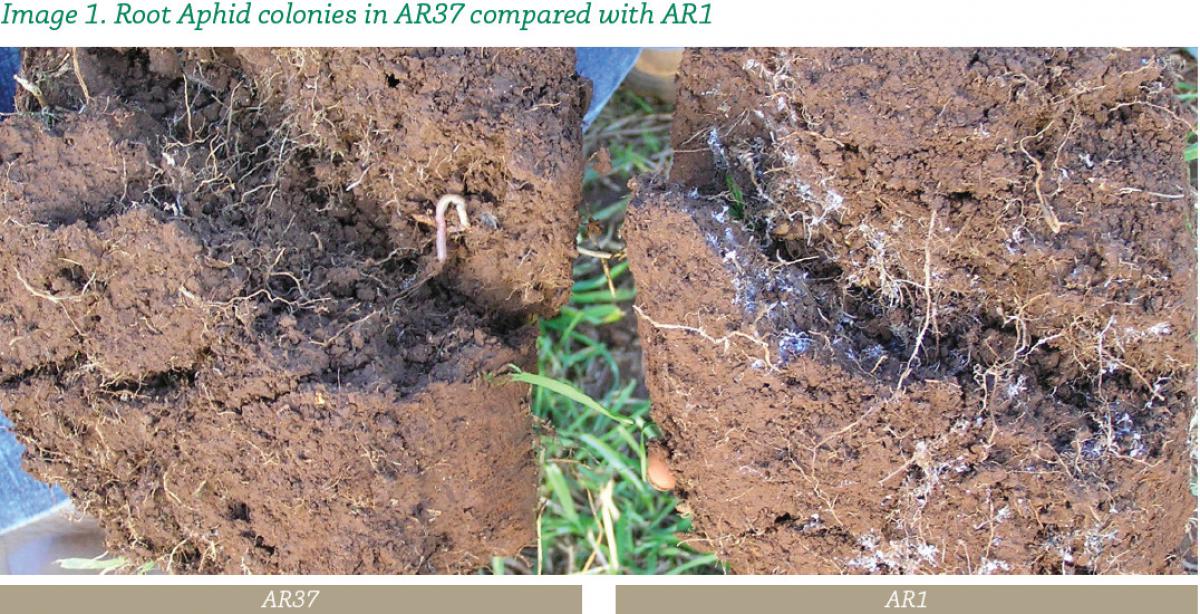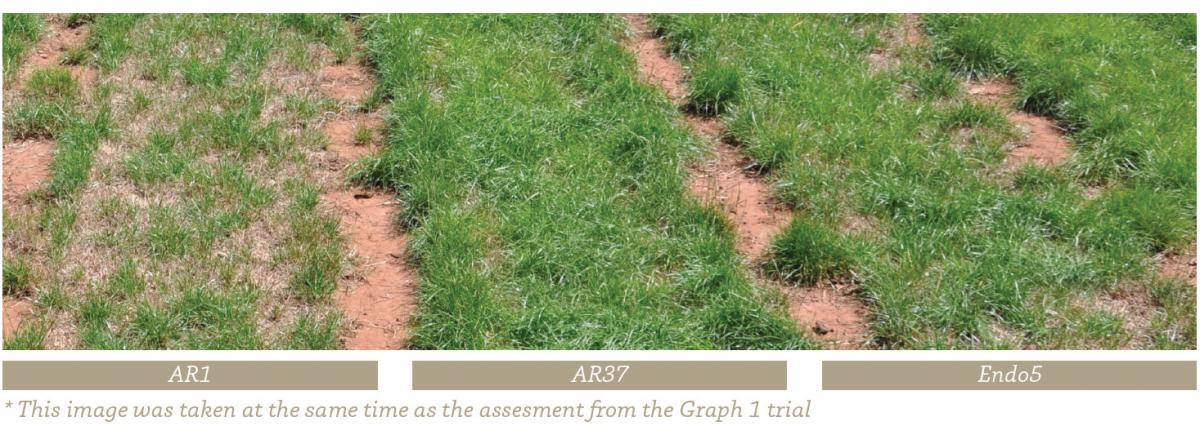Increased dry matter performance
With superior resistance to insects making for a stronger root system, ryegrass with AR37 has been shown to produce higher levels of dry matter than the same ryegrass varieties with AR1, standard or nil endophytes.
Ryegrasses with AR37 show improved persistence, with higher tiller densities over time when compared to the same cultivars with nil endophyte or standard endophyte. With higher persistence the need to renew pasture due to poor pasture composition may be reduced. The resulting higher producing sward also has long-term benefits in assisting the maintenance of excellent animal performance. The dry matter production of ryegrasses with AR37 is higher in areas with greater stress and/or insect pressure. A range of commercial and experimental perennial and long rotation ryegrass varieties with a range of endophytes were sown at Ballarat, Australia in April 2008.

All plots were uniform and no persistence differences were evident until an infestation of Root Aphids occured in February 2010 following a dry period in summer. Examination of the regrowth in plots at this time revealed that varieties with the AR37 endophyte were more persistent; evidenced by the greater ground cover percentage as shown in Graph 1 above.


At Ballarat, in south-west Victoria, an agronomic field experiment with different endophyte types in the same background cultivar (mid-flowering diploid) showed significant (P<0.05) differences for growth and tiller density in autumn (Graph 2). Relative to nil endophyte (endophyte-free), dry matter (DM) yields in autumn were +17% with AR1, +37% with standard endophyte and +61% with AR37, which corresponded with greater numbers of root aphids/m2 in the nil (31,340) and AR1 (38,930), intermediate numbers in standard endophyte (17,090), and low numbers in AR37 (4720).

Graph 3 shows the same trial as above but with the total DM produced over 3 years. The beige line represents the final persistence (Ground Cover %) after 3 years, with AR37 significantly greater (P<0.05) than SE, AR1 and nil by 35%, 50% and 43% respectively.

Image 2 illustrates the differences in persistence of late season tetraploid ryegrasses due to different endophytes in the presence of common ryegrass pests.

Graph 2 & 3 by A.J. Popay, D.E. Hume and J.C.Sewell (unpublished data)
